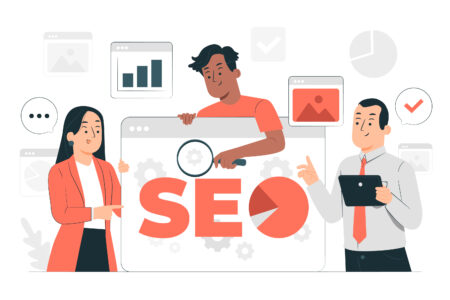5 minutes read

Mobile. Everyone is using it, everyone is searching for it, everyone is into it. Data from Statista, one of the foremost big data companies in the world today, indicates a 7.3 per cent increase in mobile internet market penetration over the past two years. Based on the data, mobile internet has grown its market share from 48.8 per cent in 2014 to 56.1. per cent in 2016.
Google Trends also indicates ‘mobile’ as one of the search terms with the highest search interest in 2016. Throughout the entire year, the term ‘mobile’ averaged a search interest score of 85.92 globally, and 85.53 in the UAE.
With Google integrating mobile-friendliness as a search ranking factor in April 2015, digital marketers are increasingly pushing towards developing their marketing campaigns for mobile conversion.
This begs the question: Is desktop no longer relevant? Will we be better off focusing our energies and efforts towards mobile optimisation and conversion? The short answer: No. Why?
Consumer engagement with devices vary
The Monetate Ecommerce Quarterly Report indicates that 42 per cent of online purchases happen within the first 60 minutes of a customer’s initial engagement with the website. Within the following six hours after the initial site engagement, an additional 9 per cent of purchases take place. That number hikes up even more after the first 24 hours of initial site engagement, increasing to 16 per cent.
What this tells us is that online consumers take time before they make a purchase. They check online reviews, look for alternatives, and compare & contrast options before they arrive at a final decision. Consumers are increasingly engaged in consuming information to make informed decisions and obtain the most value and satisfaction for their money.
The more telling data of the report, however, is this – desktop is still the primary platform for making purchases amongst consumers. Collating data from more than 6 million purchases performed during the first quarter of 2016, the research discovered that 90 per cent of customers began their online purchasing journey through desktop computers. More importantly, 91 per cent of purchases were accomplished on desktop computers.
Diving further into the data reveals the height of desktop engagement occurs from 8 a.m. to 4 p.m., which means online consumers are most engaged in their purchasing journey during the working hours of the day. Desktop page views hit a peak of 84 per cent of the market share at around 2 in the afternoon, and the percentage never drops below 75 per cent during that timeframe.
Mobile devices and tablets are the choice platforms outside of the “work hour” window, however, accounting for approximately 40 to 45 per cent of the page view market share in the wee hours of the morning, the duration of the morning and afternoon commute, and the later hours of the night.
Key takeaways from the report:
- When the origin point of the purchasing journey is a desktop computer, the likelihood of the endpoint (purchase) occurring on a desktop computer is 99 per cent.
- When the origin point of the purchasing journey is a mobile phone, the likelihood of the endpoint occurring on a mobile phone is 64 per cent.
- When the origin point of the purchasing journey is a tablet, the likelihood of the endpoint occurring on a tablet is 84 per cent.
A multi-pronged effort is key
Based on the study, the consumer purchasing journey does not take place in one device. The beginning may occur sometime during the “work hour” time frame, where a purchaser might click on an online ad or search for a product through their desktop computer. After this, chances are they will leave your website to do some personal research, and come back to it through a different device at a different time.
As such, it is essential for your website to be properly optimised for both desktop and mobile. Rounding out your digital marketing strategy with a robust desktop and mobile user interface allows you to maximise user engagement on both fronts. This can lead to higher interactions and conversions for your e-commerce website.
Have other insights regarding the topic? Feel free to let us know below on the comments section. Interested in growing your e-commerce business but have no idea where to start? Contact the experts at USEO today!



 5 min read
5 min read



